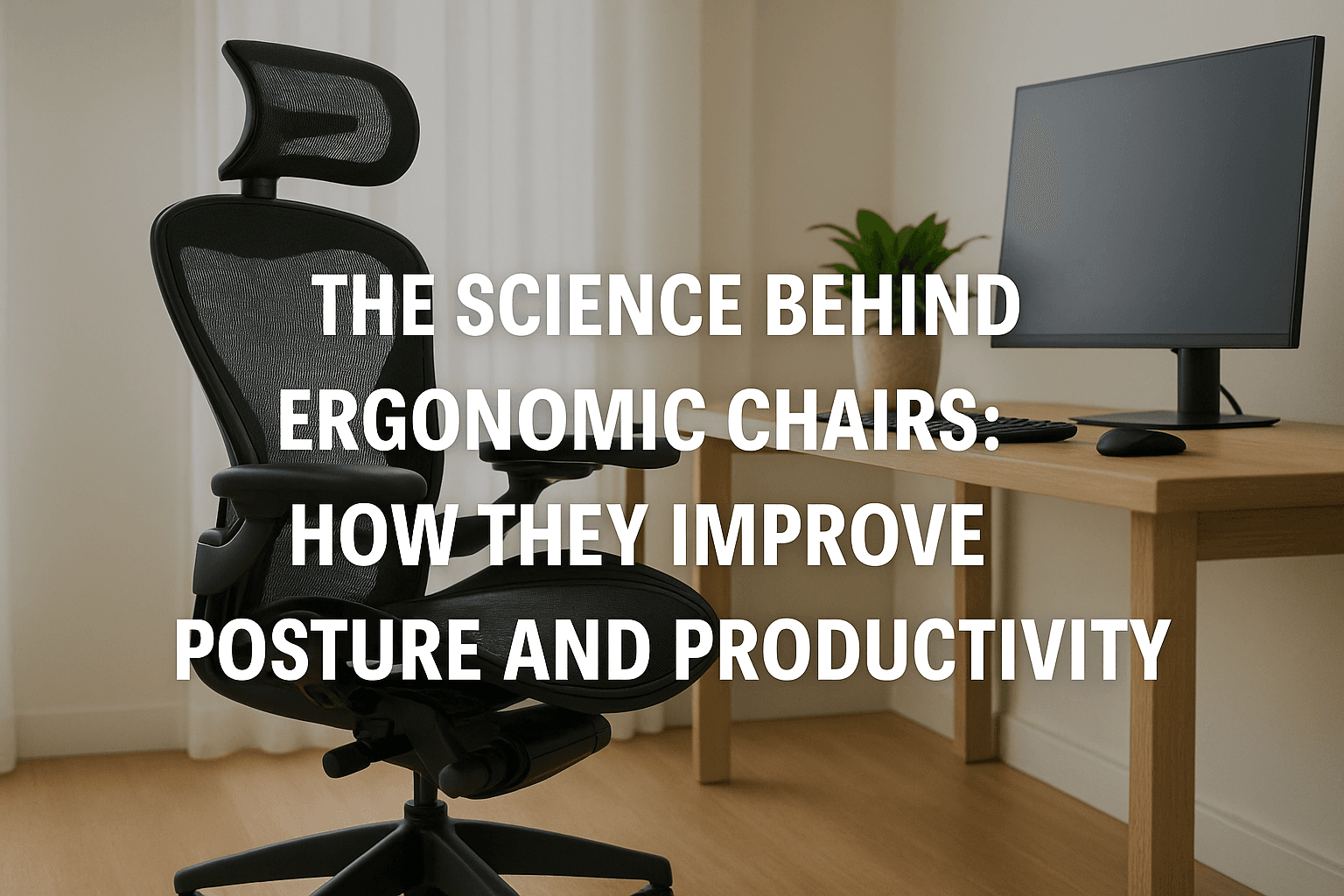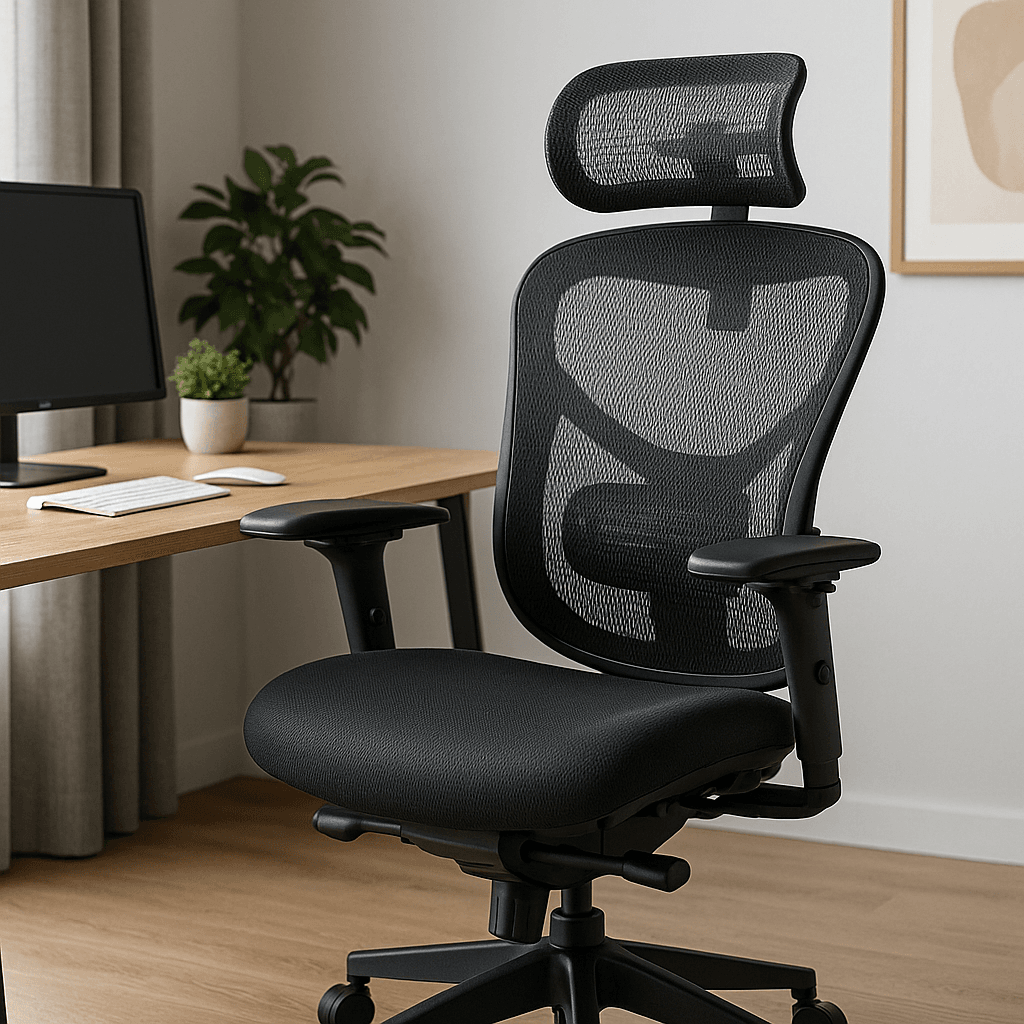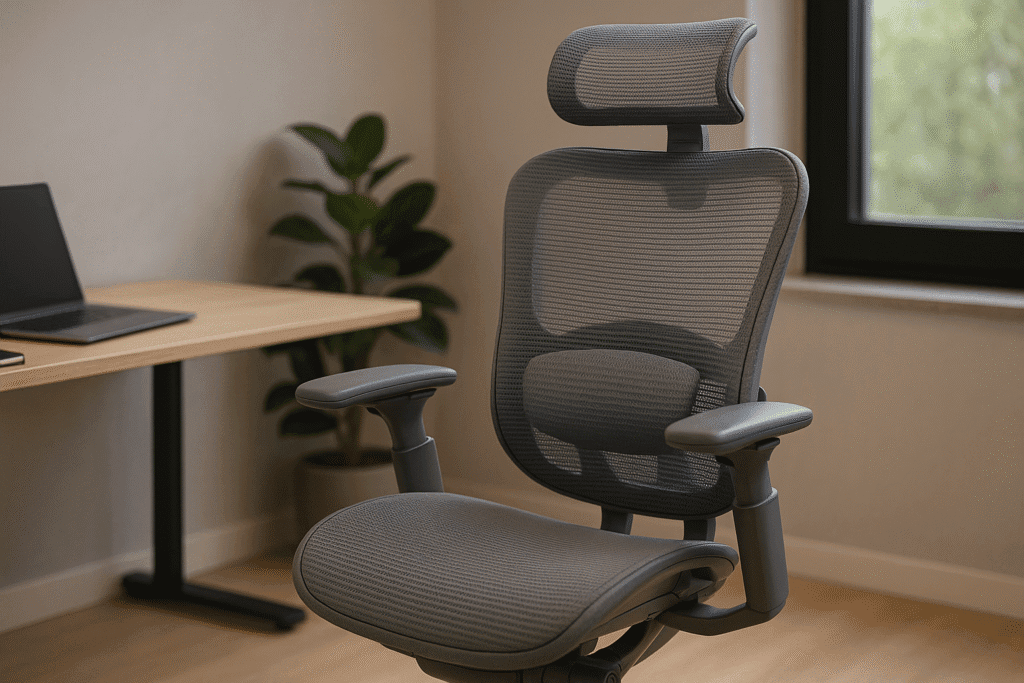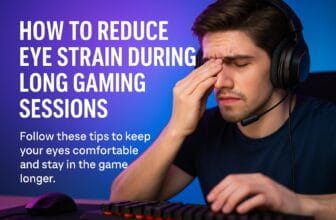
Why Your Workday—and Your Spine—Deserve Better Support
🪑 Introduction: Your Chair Could Be Silently Shaping Your Health
Most people don’t give much thought to their chair—until their back starts hurting, their shoulders ache, or their energy drops by 3 PM. But the truth is, your body is always responding to your environment. And when you sit for hours a day in a poorly designed chair, the consequences aren’t just discomfort—they’re long-term.
This is where ergonomic chairs come in. Backed by biomechanics and posture science, they’re engineered to support the way your body is designed to sit. These aren’t just “comfy seats”—they’re tools for better spinal alignment, blood flow, muscle engagement, and sustained productivity.
In this guide, we’ll explore the science behind ergonomic chairs, how they actively improve posture and performance, and how to choose one that matches your needs.
1. The Problem With Standard Office Chairs
Traditional office chairs—especially low-cost or non-adjustable ones—are based on outdated design principles that ignore human anatomy. They’re typically:
- Flat-backed, which encourages slouching
- Non-adjustable, locking users into a single, static position
- Too deep or too shallow, placing pressure on the legs or lower spine
- Lacking lumbar support, which leads to spinal collapse and fatigue

Over time, these chairs promote:
- Forward head posture
- Rounded shoulders
- Compressed lumbar discs
- Restricted circulation in the legs
- Neck and lower back pain
It’s not just about sitting “wrong”—it’s about sitting in a structure that fights your body instead of working with it.
2. What Makes a Chair Ergonomic?
An ergonomic chair is designed based on human movement and skeletal structure. The goal is to:
- Support the spine’s natural S-curve
- Promote dynamic sitting (frequent movement and posture shifts)
- Distribute weight evenly across the thighs and pelvis
- Allow adjustability so users of different body types can achieve optimal posture
Key Ergonomic Features:
- Adjustable seat height and depth
- Lumbar support (static or dynamic)
- Tilt and recline mechanisms
- Multi-directional armrests
- Head and neck support (in executive models)
- Breathable, responsive materials
3. The Spine’s S-Curve and Why It Matters
Your spine isn’t a straight rod—it’s shaped like an “S” when viewed from the side. Each curve serves a purpose:
- Cervical (neck) curve supports the head and allows rotation
- Thoracic (upper back) curve accommodates the ribs and supports posture
- Lumbar (lower back) curve absorbs shock and stabilizes movement
Poor seating flattens the lumbar curve and increases thoracic kyphosis (hunching), which places strain on discs, muscles, and nerves.
An ergonomic chair reinforces the lumbar curve, encouraging neutral alignment and reducing muscular compensation and fatigue.

4. Dynamic Sitting: Why Movement Is Key
Even with great posture, staying still too long creates problems—reduced circulation, stiff joints, and decreased mental energy.
That’s why top ergonomic chairs support micro-movements:
- Recline mechanisms let you lean and stretch
- Swivel bases and casters help you reach without twisting
- Tilting seats adjust with your movement to relieve pressure
This concept of active or dynamic sitting mimics natural body shifts, which reduces the risk of injury and keeps you more alert.
5. Blood Flow and Pressure Relief: It’s Not Just About the Back
Ergonomic design also improves circulation:
- Waterfall seat edges reduce pressure under the thighs
- Seat height adjustment ensures feet are flat on the floor
- Seat depth tuning keeps pressure off the knees
Improved blood flow means:
- Reduced leg fatigue and swelling
- Lower risk of varicose veins
- More oxygen to the brain, improving cognitive focus
6. Cognitive Benefits: How Comfort Affects Focus
We tend to think of posture as physical—but it directly affects our mental performance too.
Poor seating posture can lead to:
- Increased fatigue by mid-day
- Difficulty concentrating due to discomfort
- More mental effort spent adjusting or “fighting” your chair
Meanwhile, a well-fitted ergonomic chair:
- Reduces distraction caused by discomfort
- Supports sustained focus
- Encourages longer, more productive work sessions
The science here is clear: the more your body is supported, the better your brain performs.
7. Real-World Examples of Ergonomic Gains
A growing number of studies support the benefits of ergonomic seating in real work settings:
- Cornell University research found that well-designed chairs reduced back discomfort by 40% and increased productivity by 17%.
- A British Journal of Sports Medicine review linked poor sitting posture with increased musculoskeletal strain and reduced job performance.
- Tech companies like Google, Facebook, and Apple invest heavily in ergonomic chairs for employees—because better posture means better performance.
8. Long-Term Impact: Preventing Injuries and Downtime
The true ROI of an ergonomic chair is not just better days—it’s fewer bad years. Common sitting-related issues include:
- Chronic back pain
- Carpal tunnel syndrome
- Disc herniation
- Cervical strain (neck pain)
These conditions result in lost work time, costly treatments, and sometimes permanent damage. A properly designed chair acts as a preventive health measure just as much as it’s a comfort upgrade.
9. How to Choose a Chair That Works for You
Choosing the right ergonomic chair involves matching features to your anatomy and habits:
| Feature | What to Look For |
|---|---|
| Lumbar Support | Adjustable or self-adaptive to match your spinal curve |
| Seat Height | Allows feet to rest flat with thighs parallel to floor |
| Seat Depth | 2–3 inches between seat edge and back of knees |
| Armrests | Adjustable in height and width, support relaxed shoulders |
| Backrest Tilt | Lockable recline with tension adjustment |
| Materials | Breathable mesh or high-resilience foam for comfort |
| Warranty/Build Quality | 3–12 years for premium chairs with solid construction |

10. Common Misconceptions About Ergonomic Chairs
- ❌ “Any office chair with a cushion is ergonomic.”
➤ True ergonomic chairs are engineered—not just padded. - ❌ “Mesh means it’s always better.”
➤ Mesh is breathable, but lumbar support matters more. - ❌ “Expensive equals ergonomic.”
➤ Price doesn’t always reflect adjustability or fit—features do.
🛒 Recommended Ergonomic Chairs That Support Science-Backed Benefits
Here are a few high-quality chairs that embody the principles discussed:
🪑 MeshBack Ultra-Pro Ergonomic Chair
Built for breathability, lumbar precision, and 8+ hour use
Explore: MeshBack Ultra Chair
🪑 LuxeForm Executive Memory Foam Chair
Memory foam contouring with executive posture design
Explore: LuxeForm Executive Chair

🪑 PostureFlex Hybrid Fabric Chair
Smart design with head and shoulder support for upright workers
Explore: PostureFlex Chair
🪑 Contour Elite High-Back Chair
Built-in S-curve spine support for posture correction
Explore: Contour Elite Chair
✅ Final Thoughts: Science Says Sit Smarter
Your chair does more than hold you up—it affects how you move, how you feel, and how you perform. Backed by decades of science, ergonomic seating supports your spine’s natural shape, improves circulation, and keeps your mind sharp—all while preventing long-term injury.
If you’re working hard, your chair should be too.
👉 Call to Action
Browse science-backed ergonomic chairs at LarryTechGifts.com and take the next step toward comfort, health, and productivity.

I am a USMC Veteran who worked with a Lot of computers and Technology while I was in. I became hooked and learned a lot in my 20 years.
At my store, I am passionate about bringing you the latest tech products that enhance your everyday life. Our mission is to provide quality, innovation, and value, making sure you find the perfect gadgets to fit your needs. Thanks for Your Support.. Larry Mac





